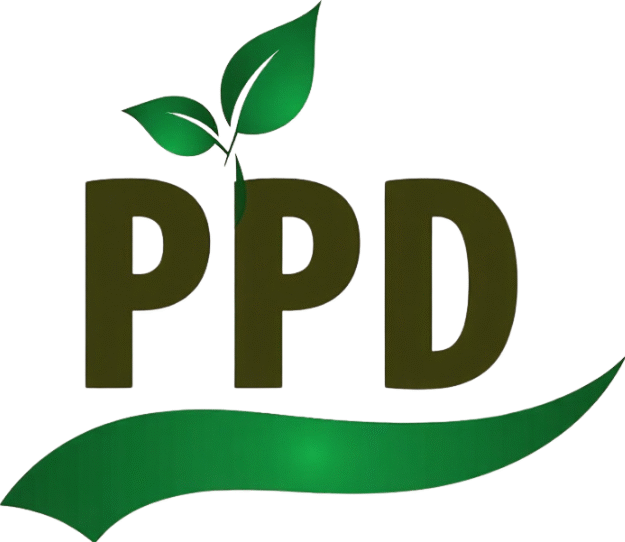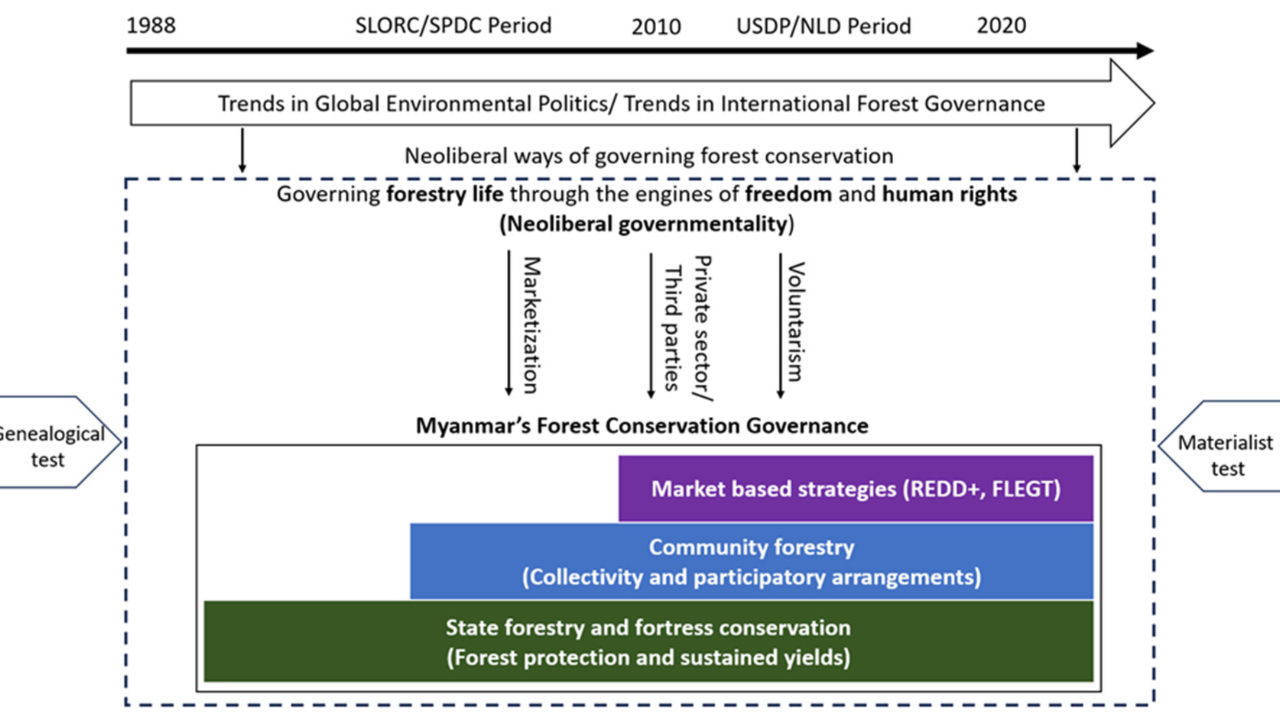
Since the 1990s, Myanmar’s approach to managing plant health and pest threats has undergone a significant transformation. From traditional, manual pest control methods to the development of structured laws, institutions, and international cooperation, the governance of plant protection has evolved in response to rising agricultural demand, climate variability, and globalization of trade. This article provides an in-depth look at the evolution of plant protection governance in Myanmar over the past three decades, focusing on legislation, institutions, inter-agency coordination, and strategic shifts.
1990s: The Foundation of Formal Governance
The 1990s marked the formal beginning of plant protection governance in Myanmar, as the country began recognizing the risks of pest outbreaks on food production and trade.
Key Developments:
- 1990 – Enactment of the Pesticide Law
This law was one of the first major legal instruments focused on the regulation of pesticide use, addressing import, manufacture, sale, and safe application. - 1993 – Plant Pest Quarantine Law
This landmark legislation established Myanmar’s legal framework for controlling the movement of pests across borders, both for import and export purposes. It enabled the creation of quarantine checkpoints and empowered plant protection officers to inspect and enforce compliance.
Institutional Setup:
- Establishment of the Plant Protection Division (PPD) under the Department of Agriculture (DOA) as the lead implementing body.
- Focused mainly on pesticide regulation, manual pest control methods, and reactive quarantine.
2000s: Capacity Building and Regional Integration
During the 2000s, Myanmar began integrating more with regional and international frameworks, which influenced its approach to plant protection.
Strategic Shifts:
- Emphasis on Integrated Pest Management (IPM) as a sustainable alternative to chemical-intensive farming.
- Capacity-building initiatives supported by the FAO, IRRI, and ASEAN.
Milestones:
- Expansion of Farmer Field Schools and training programs to promote eco-friendly pest control.
- Improvements in laboratory infrastructure and diagnostic capabilities for pest identification.
- Initiation of phytosanitary certification procedures to facilitate exports in compliance with international standards.
2010s: Aligning with International Plant Health Standards
This decade was characterized by a more strategic, globally aligned governance model, influenced by trade expansion, environmental challenges, and the need to modernize regulatory systems.
Key Highlights:
- Myanmar becomes an active member of the International Plant Protection Convention (IPPC), formalizing its commitment to adopt internationally accepted phytosanitary measures.
- Development of Pest Risk Analysis (PRA) capabilities to assess threats from imported planting materials.
- Introduction of National Pest Surveillance Programs with regional coordination.
- Strengthening of emergency response mechanisms to deal with outbreaks like the Fall Armyworm and fruit fly infestations.
Governance Improvements:
- Formation of inter-agency coordination mechanisms involving the Department of Agricultural Research (DAR), Customs, Ministry of Commerce, and General Administration Department (GAD).
- Expansion of quarantine services at airports, land borders, and seaports.
2020s: Toward Integrated Plant Biosecurity
As pest threats become more complex—driven by climate change, cross-border trade, and ecological disruption—Myanmar is now moving toward an integrated, proactive biosecurity model.
Reforms Underway:
- Revision of the Plant Pest Quarantine Law to address current risks, introduce digital tools, and clarify inter-departmental roles.
- Drafting of a comprehensive Plant Biosecurity Strategy, which merges surveillance, quarantine, pesticide regulation, and outbreak response.
- Greater adoption of digital pest monitoring tools and mobile-based early warning systems.
- Increased focus on environmental and public health impacts of pest management practices.
International Collaborations:
- Participation in ASEAN Plant Health initiatives, regional simulation exercises, and pest intelligence networks.
- Engagement with WTO-SPS standards to ensure trade compatibility and reduce the risk of phytosanitary disputes.
Achievements of Plant Protection Governance (1990–2025)
| Period | Governance Milestone |
|---|---|
| 1990s | Legal foundation laid with Pesticide Law and Quarantine Law |
| 2000s | Capacity building and regional IPM integration |
| 2010s | International alignment (IPPC, PRA, surveillance networks) |
| 2020s | Legal revisions, digital tools, biosecurity strategy emerging |
| Ongoing | Multi-agency coordination and public-private collaboration |
Institutional Landscape Over Time
| Institution | Role in Governance | Established / Active Since |
|---|---|---|
| Plant Protection Division (PPD) | Central technical body for pest control and quarantine | 1990s |
| Department of Agricultural Research (DAR) | Research and development of pest-resistant crops and biocontrols | 2000s |
| Customs and MoC | Trade compliance and phytosanitary certification | 1990s onward |
| General Administration Department | Local-level emergency response coordination | 2010s |
| National Plant Protection Organization (NPPO) | Interface with IPPC, oversees compliance | 2010s |
Challenges in Governance Implementation
Despite the evolution, several systemic challenges persist:
- Insufficient human resources at regional and township levels.
- Budget limitations for modernizing quarantine labs and surveillance infrastructure.
- Overlap of mandates among departments causing occasional delays or inefficiencies.
- Low farmer compliance with IPM or safe pesticide use due to knowledge and accessibility gaps.
Future Directions and Opportunities
To meet future threats, Myanmar is focused on:
- Enacting an Integrated Plant Health Law to unify quarantine, surveillance, and pesticide regulation.
- Strengthening data-sharing platforms across agencies and international partners.
- Enhancing cross-border coordination with neighboring NPPOs.
- Investing in education, public awareness, and digital literacy for both farmers and staff.
Overview Table: Evolution of Plant Protection Governance in Myanmar
| Timeline | Legal/Institutional Milestone | Governance Focus |
|---|---|---|
| 1990 | Pesticide Law | Agrochemical regulation |
| 1993 | Plant Pest Quarantine Law | Import/export control and inspections |
| 2000–2009 | Regional capacity-building and IPM expansion | Farmer training, IPM promotion |
| 2010–2019 | IPPC alignment, PRA, surveillance networks | Science-based plant health management |
| 2020–2025 | Digital tools, biosecurity reforms | Integrated, risk-based governance |
Conclusion
Over the last 30+ years, Myanmar’s plant protection governance has matured from basic pest control laws into a multi-tiered, internationally-aligned system. While notable strides have been made in regulation, surveillance, and institutional capacity, the journey continues. With pests growing more complex and climate change altering agro-ecologies, Myanmar’s future lies in building a robust, adaptive, and collaborative plant protection governance framework that is ready for the next generation of agricultural challenges.
Top 3 One-Line FAQs
Q1: When did Myanmar begin formal plant protection governance?
A: With the enactment of the Pesticide Law in 1990 and Plant Pest Quarantine Law in 1993.
Q2: What is the current focus of Myanmar’s plant protection strategy?
A: Integrating quarantine, surveillance, and IPM under a national biosecurity strategy.
Q3: Which international standards guide Myanmar’s plant protection governance?
A: Myanmar aligns with IPPC, ASEAN standards, and WTO-SPS agreements.

